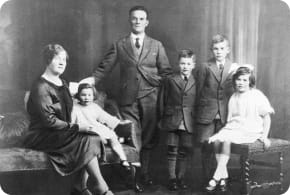William J. Andrews
People Buried Here
Epitaph
In my father's house - John 14:2-3
Description
Mother - Father - Son -Grandchildren
Ask an expert about your family tree
Want to dive deeper into your family tree? Begin with a free quote for a family history research package offered by Legacy Tree - an independent genealogy service.
Additional data from member contributors
Relationships
BillionGraves.com record for William J. Andrews (23 September 1835 - 19 February 1896), BillionGraves Record Provo City Cemetery, Provo, Utah, Utah, United States, North America
Feedback


